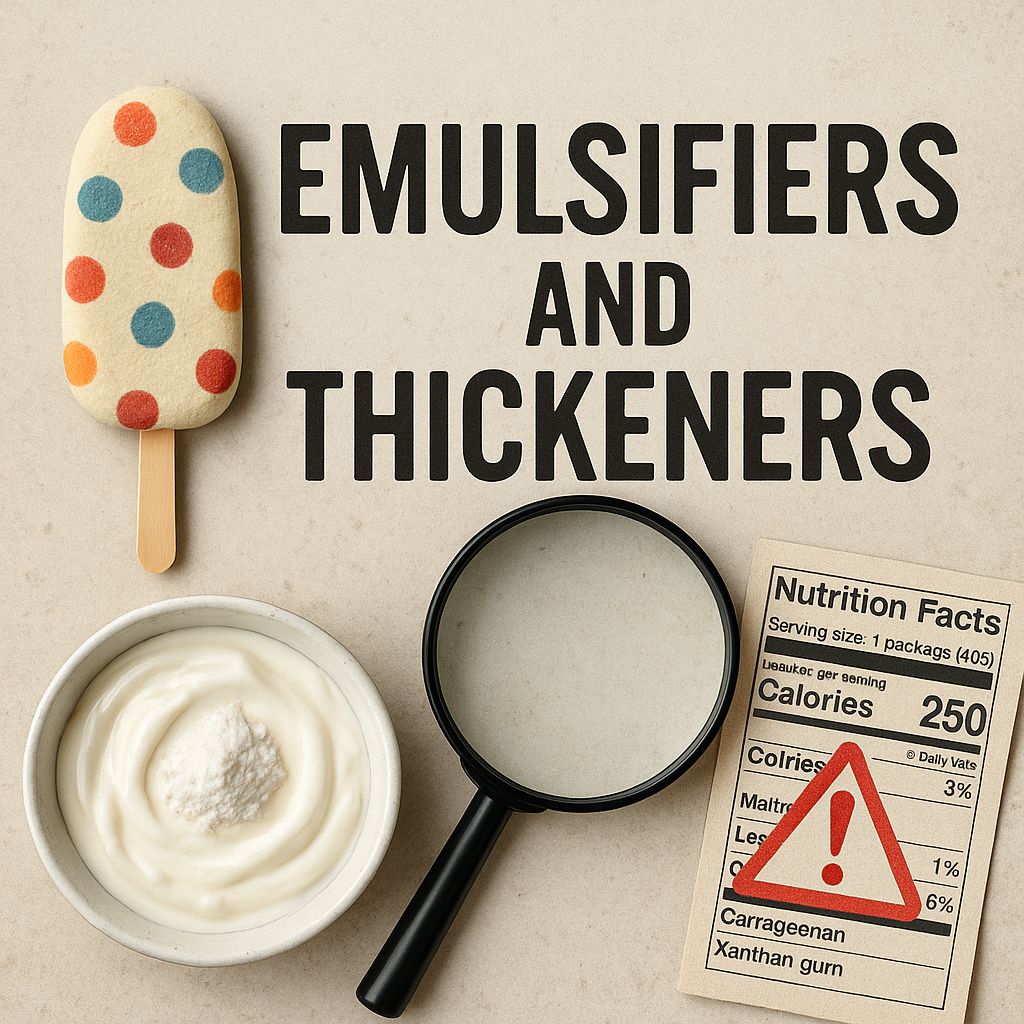- Culture Shock
- Posts
- The Great Gum Reckoning: How Emulsifiers Just Became the Frontline of Food Culture
The Great Gum Reckoning: How Emulsifiers Just Became the Frontline of Food Culture

Consumer insights leaders, brace yourselves. Thickeners and stabilizers (the quiet heroes of texture) are now cultural liabilities. Ingredients like xanthan, guar, carrageenan, polysorbate 80, and maltodextrin are trending as villains. What was backstage food chemistry is now center stage in public critique, policy shifts, and gut-health storytelling.
1. Rising Cultural Heat on Emulsifiers
Scroll through TikTok and you’ll find more than dance challenges. There’s a content wave around “xanthan gum side effects,” bloating complaints, and microbiome panic. Hashtags like #xanthangumisbad are trending. A viral trend on TikTok even calls out xanthan for causing gut permeability and inflammation in animal models (The Charlotte Post).
That echoes deeper science. A 2024 NutriNet–Santé study found dietary exposure to carrageenan, guar, and xanthan gums linked to higher type 2 diabetes risk (Genetic Literacy Project). Another Michigan study showed long-term consumption enriches gut microbes around these additives, hinting that even our microbiota is adapting (Michigan Medicine).
2. RFK Jr’s MAHA Campaign: Additives Are No Longer Safe from Scrutiny
This firestorm hasn’t gone unnoticed at HHS. Under the “Make America Healthy Again” banner, RFK Jr. is targeting not just dyes but the whole additive ecosystem. Synthetic dyes are first in line. Red Dye No. 3 is already out. Red 40 and Yellow 5 are scheduled for phase-out by 2026 (The Washington Post).
Now, policy attention is spilling over into gums and emulsifiers. A leaked HHS document placed emulsifiers under the same microscope, citing potential damage to gut lining and microbiome health (The Charlotte Post). Kennedy’s team is also advancing FDA reform by closing the GRAS loophole. That means banning self-affirmation of additive safety and requiring full transparency (Health.com).
3. The Regulatory Landscape Is Shifting
The GRAS (Generally Recognized as Safe) loophole has allowed manufacturers to self-certify additives since 1997. That practice is ending. HHS has directed the FDA to require public notification, full safety dossiers, and regulatory oversight (Food & Wine).
This is not just FDA drama. Several states are already capping additive use in SNAP-funded food and banning certain dyes. Public health advocates are circling the additive shelf. It’s only a matter of time before emulsifiers join the restricted list (The Guardian).
4. Gut Feelings and Consumer Narratives
This is more than regulation. It’s a narrative shift. When consumers feel bloated or “off” after eating yogurt or ice cream, that memory builds a reputation. In one case, someone with inflammatory bowel issues dramatically improved after eliminating emulsifier-heavy products (The Charlotte Post).
Food influencers, parents, gut-health forums, and wellness gurus are painting gums as unnatural. A segment intentionally avoiding gums is emerging. People are meaning-making creatures. When an ingredient is labeled artificial or unpronounceable, it loses appeal, even if the science remains contested.
5. What Consumer Insight Leaders Should Be Doing
Intel teams need to treat this as a multifaceted risk:
Reformulate now
Explore gum-free or low-emulsifier SKUs. Texture innovation does not have to lean on legacy ingredients.Pilot transparency
Launch “behind-the-label” educational content. Explain why each ingredient exists, what alternatives were tested, and how you balance safety, function, and taste.Biotech for texture
Partner with ingredient innovators developing plant-based or microbe-derived alternatives that deliver mouthfeel without the cultural baggage.Track sentiment and policy in real time
Use social listening tools to monitor spikes in chatter and legislative activity around SNAP, emulsifiers, and dyes.Own the gut-health message
Move the conversation from “clean label” to “clean logic.” Consumers are no longer content with short ingredient lists. They want logic and integrity behind what’s included.
6. Crisis or Opportunity?
This is not a passing trend. It’s a tectonic shift in how culture interprets food safety. Insight leaders must act like cultural cartographers. The map is changing fast.
We see two paths:
Brands that shield: those leaning into transparency, reformulation, and forward storytelling
Brands that absorb aftershocks: those waiting for fallout before acting
The clean-label movement has already proved that once an ingredient becomes culturally toxic, it is nearly impossible to salvage its reputation. If gums follow that arc, first movers will win.
Final Takeaway
Emulsifiers and gums used to be invisible. That’s no longer the case. They are now a battleground for trust, transparency, and cultural relevance. Consumer insights leaders must treat these ingredients as strategic decisions. They shape brand identity as much as taste or packaging.
Policymakers are moving. Consumers are learning. Culture is paying attention. Additives are no longer background noise. They are front and center.
Prepare accordingly.
All my insights come from Nichefire and the content and articles I discover from using it. Come check us out!